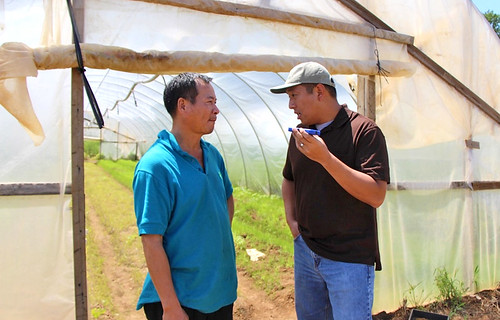
Did you know that Asian Americans and Pacific Islanders (AAPIs) make up the fastest growing population group in the United States? Increasing over four times as rapidly as the overall U.S. population, AAPIs are projected to more than double by 2060, from 20 million today to 50 million. A recent event in the nation’s capital focused on the implications of this trend, in a public exhibit and conference entitled "Fast Forward 2060" (FF 2060) As USDA’s Senior Advisor and Director of AAPI Affairs, I was excited to participate in this event and exhibit the ways that USDA serves the AAPI community.
Community-based organizations, government agencies, associations, businesses and media gathered in Washington, DC on December 7, 2016 to reflect on the progress that had been made under the White House Initiative on AAPIs (WHIAAPI) and discuss the challenges that still lay ahead. Since 2009, the White House Initiative on AAPIs under President Obama has been working to improve the quality of life for AAPIs by increasing access to federal programs and assistance, as recounted in a legacy video shown by WHIAAPI at FF 2060. USDA has been very strategically engaged in WHIAAPI throughout the Obama Administration. USDA’s exhibit at FF 2060 showcased some of our focused results.
Language access is a priority for the AAPI community, with two out of three AAPIs born outside the U.S., and one in three having limited English proficiency. Knowing this, USDA has translated a wide range of program information so that the AAPI community has access to its resources that range from the nutrition education tool, MyPlate, to Supplemental Nutrition Assistance Program (SNAP), to Rural Development programs, to food safety materials, to animal and plant health information, to farm and conservation programs.
USDA also supports a project through Michigan State University, called Hmong Language Media Resource. This project brings together both written and audio information of interest to farmers and the rural community in the Hmong language. It is in the process of expanding to include other AAPI languages as well.
In addition to written translations, USDA is increasing the availability of its translation services. Below, NRCS technical advisor Frank Wu speaks in Mandarin Chinese to a New Jersey farmer whose native language is Chinese, about FSA farm loan programs and NRCS conservation programs.

Growth of the AAPI population is occurring in all regions of the country, in both urban and rural areas. So, it is not surprising that farms operated by AAPIs also are increasing. The USDA Census of Agriculture reveals that Asian American farm operators tend to be younger in age, newer to farming, more likely to be female, and more likely to have farming as their primary occupation. To learn more about an overview of Asian farm operators, please visit the Ag Census’ Asian Farmers Highlights. Complete coverage and analysis of AAPI farms in the 2017 USDA Census of Agriculture is an upcoming priority for USDA.
To strengthen USDA’s engagement at the local level with AAPI communities and our interagency partners, USDA has more than 30 field employees across the country who represent USDA on the ten WHIAAPI Regional Networks (RNs). These networks ensure that the local AAPI communities that USDA serves have local points of contact to help them understand and access federal programs.
USDA works hard to improve access for all under-served groups. As an American of Japanese descent, I am proud to have led USDA’s implementation of WHIAAPI and worked with colleagues all across USDA to support the AAPI communities. As the AAPI population continues to grow, so too will the need for greater outreach and engagement by USDA.




